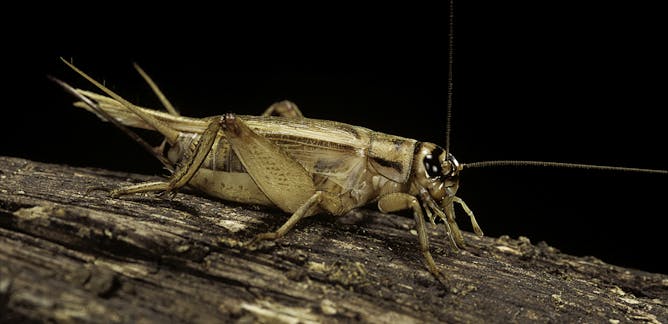
Smithsonian Institution

Since its founding in 1846, the Smithsonian Institution has been committed to inspiring generations through knowledge and discovery. The Smithsonian is the world’s largest museum, education and research complex, consisting of 21 museums, eight research centers, numerous education and cultural centers, and the National Zoological Park.
Links
Displaying all articles

Only male crickets have wing structures that produce sound, but females are very good at following the signal.

Just as the world’s zoos breed critically endangered animals in captivity to repopulate the wild, scientists are building a global effort to freeze corals for reef restoration.

It might seem counterintuitive to suggest timber harvesting when the goal is to restore forests, but that gives landholders the economic incentive to protect and manage forests over time.

Dogs have lived with Indigenous Americans since before they came to the continent together 10,000 years ago. A new analysis reveals the lineage of one 1800s ‘woolly dog’ from the Pacific Northwest.

Novas evidências arqueológicas reforçam a hipótese de que a ocupação de humanos modernos nas Américas ocorreu muito antes do que se pensava

The largest ever giraffe tracking study shows how these massive animals are responding to human pressures across many different habitats throughout Africa.

Black corals provide critical habitat for many creatures that live in the dark, often barren, deep sea, and researchers are learning more about these rare corals with every dive.

New research shows just 2% of the Great Barrier Reef remains untouched by bleaching since 1998. Its future survival depends on how much higher we allow global temperatures to rise.

A new environmental record for a prehistoric site in Kenya helped researchers figure out how external conditions influenced which of our ancient ancestors lived there, with what way of life.

Healthy seagrasses form underwater meadows teeming with fish and shellfish. A successful large-scale restoration project in Virginia could become a model for reseeding damaged seagrass beds worldwide.

There are fundamental knowledge gaps around coral in the Great Barrier Reef, including how many species live there and where they’re found. Our new study finally starts to fill those gaps.

The footprints of over 20 different prehistoric people, pressed into volcanic ash thousands of years ago in Tanzania, show possible evidence for sexual division of labor in this ancient community.

Bagaimana paus, yang hanya memakan makhluk kecil, mampu berevolusi menjadi makhluk terbesar di dunia? Dan mengapa mereka tidak bertambah besar?

How did whales that feed on tiny prey evolve into the largest creatures on Earth? And why don’t they get even bigger?

Two scholars report on how conservation policies designed to protect reindeer are harming the nomadic Tsaatan people who rely on them.

A 19th-century volume contained a mystery for two historians who combined their knowledge to tell the story of the women and their contributions to American democracy.

Thalidomide was developed in an era of widespread enthusiasm – but little critical attention – for pharmaceutical therapies.

The rise of hydraulic fracturing, or fracking, has ushered in an era of intense drilling that has been called the great shale gas rush. Fracking allows oil and natural gas to be extracted from horizontal…

The Great Barrier Reef is worth billions to Australia’s economy and is one of the world’s most significant natural features. We have a responsibility to protect it, and our other reefs, from the warming…
